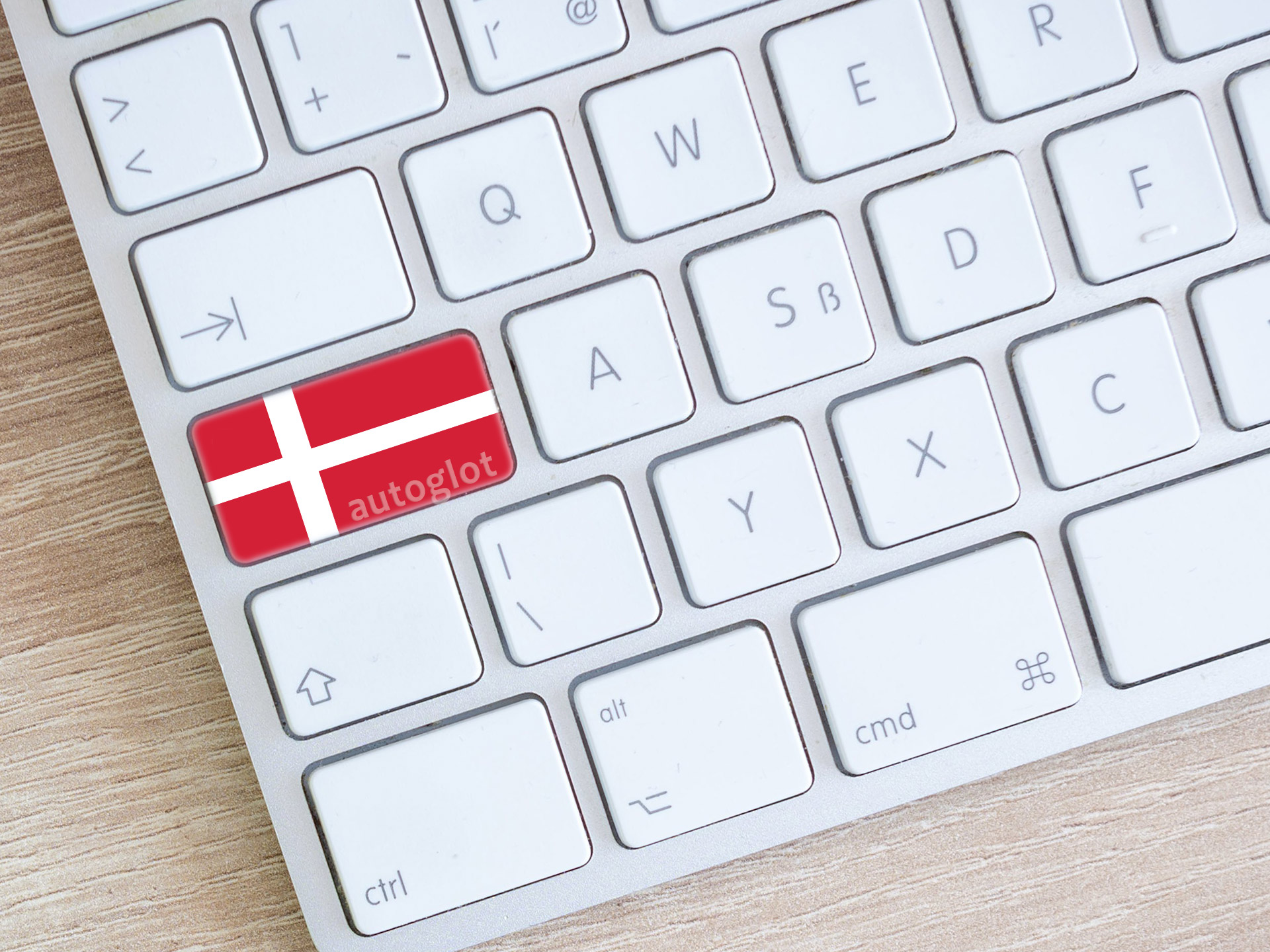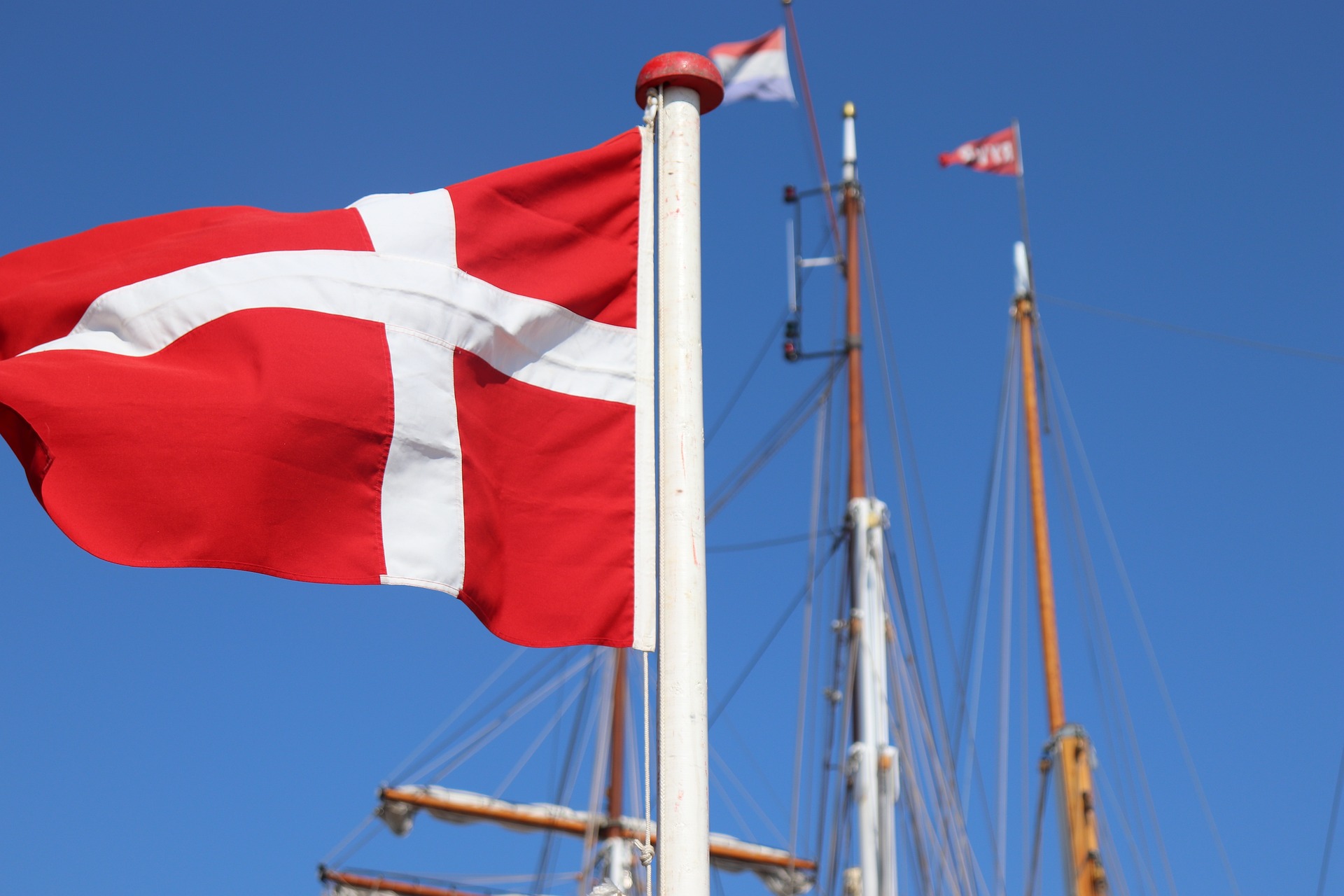
Көп тилдүү веб-сайттардын маанилүүлүгүн баалоого болбойт. Дүйнөлүк базар экспоненциалдуу түрдө кеңейип жаткандыктан, бизнес жана жеке адамдар өз эне тилдеринде аудиторияга жетүүнүн эбегейсиз артыкчылыктарын түшүнүшөт.
Көп тилдүү веб-сайттарды түзүү контекстинде олуттуу мааниге ээ болгон тилдердин бири - Дания.
Көп тилдүү веб-сайттарга киришүү жана Дания тилине которуу
Дания, түндүк герман тили, дүйнө жүзү боюнча болжол менен 6 миллион адам сүйлөйт. Негизинен Данияда колдонулса да, Фарер аралдарында жана Гренландияда расмий статуска ээ, бул бул аймактардагы аудитория менен байланышууну каалагандар үчүн негизги тил болуп саналат.
Дания тили Викинг дооруна чейинки бай тарыхка ээ. Кылымдар бою ал өзүнчө фонологиясы, лексикасы жана грамматикасы менен өзгөчөлөнүп, өзүнчө тилдик түзүлүшкө айланган. Дания тили татаал үндүү тыбыштары жана флекциялык морфологиясы үчүн эне тили болбогондор үчүн айрым кыйынчылыктарды жаратышы мүмкүн, бирок анын салыштырмалуу жөнөкөй синтаксиси жана грамматикасы аны үйрөнүүгө жеткиликтүү тил кылат.
Дания тилдүү рынокко кирүүнү каалаган ишканалар жана жеке адамдар үчүн Дания тилинде жергиликтүү веб-сайтка ээ болуу абдан маанилүү. Ал даниялык тилдүү аудиторияга кызмат көрсөтүү боюнча милдеттенмени гана көрсөтпөстөн, колдонуучу тажрыйбасын жогорулатып, ишенимди жана ишенимди бекемдейт.
Мындан тышкары, интернетте даниялык мазмундун таралышынын өсүшү менен, веб-сайтыңыздын даниялык версиясына ээ болуу сиздин онлайн мүмкүнчүлүгүңүздү кыйла кеңейтет. Сиз көп улуттуу корпорациясызбы же эл аралык масштабда кеңейтүүнү көздөгөн чакан бизнессизби, WordPress сайтыңызды дания тилине которуу өсүү жана ийгилик үчүн мүмкүнчүлүктөр дүйнөсүн ачат.
Бул макалада WordPress сайтын Дания тилине которуу процесси изилденип, жолдогу пайдаларды жана кыйынчылыктарды баса белгилейт. Биз ошондой эле күчтүү куралды, Autoglot WordPress котормо плагинин киргизебиз, ал котормо процессин автоматташтыруу жана веб-сайтыңыздын даниялык аудитория менен натыйжалуу сүйлөшүшүн камсыз кылуу үчүн үзгүлтүксүз чечимди сунуштайт. Ошентип, келгиле, даниялык котормо дүйнөсүнө кирип, даниялык тилдүү рынокто WordPress сайтыңыздын толук потенциалын кантип ача аларыңызды билели.
Дания тили
Дания герман тилдеринин түндүк герман бутагына кирген лингвистикалык кесиптештеринин арасында өзгөчө орунду ээлейт. Тамырлары Скандинавиянын тарыхына терең сиңип калган дания тили кылымдар бою өзгөчө жана өзүнө тартып турган тилге айланган.

Дания тилинин тарыхы
Дания тилинин тарыхын Викинг дооруна, 8-11-кылымдарга чейин байкоого болот. Бул убакыттын ичинде даниялык, норвегиялык жана швед тилин камтыган заманбап скандинав тилдеринин прекурсору болгон эски норвег тили бүткүл Скандинавия аймагында сүйлөшчү. Норвегиялык отурукташкандар аймакка тараган сайын, алардын тили акырындык менен биз азыр Дания деп тааныган тилге айланган.
Бүткүл орто кылымдар аралыгында дания тили кошуна тилдер жана диалектилер менен байланыштын таасири астында олуттуу өзгөрүүлөргө дуушар болгон. Христиан дининин киргизилиши жана латын графикасынын кабыл алынышы тилди андан ары калыптандырып, орто дания тилинин өнүгүшүнө алып келген.
16-кылымда дания Данияда жана анын аймактарында башкаруунун, адабияттын жана маданияттын үстөмдүк тили болуп калды. Бул мезгилде даниялык орфографияны жана грамматиканы стандартташтыруу биз бүгүн билген азыркы даниялык тилдин пайдубалын түптөгөн.
Дания тилинин структурасы, лексикасы жана грамматикасы
Дания тили, башка скандинавиялык тилдер сыяктуу эле, башка көптөгөн европалык тилдерге салыштырмалуу жөнөкөй грамматикалык түзүлүшкө ээ. Ал сүйлөмдөрдүн көбүндө предмет-этиш-объект сөздөрдүн тизилишин ээрчийт, сандык жана аныктоочу атоочтор менен.
- Даниянын эң айырмаланган өзгөчөлүктөрүнүн бири анын айтылышы, үндүү тыбыштардын кеңири диапазону жана уникалдуу stød же glottal аялдамасы менен мүнөздөлөт. Бул фонетикалык өзгөчөлүктөр Дания тилине анын мелодиялык жана ритмикалык сапатын берип, аны башка герман тилдеринен айырмалап турат.
- Дания тилинин лексикасы ар кандай булактардан, анын ичинде эски Norse, төмөнкү немис жана латын тилдеринен алынган. Көптөгөн сөздөр англис же башка герман тилдеринде сүйлөгөндөргө бейтааныш көрүнсө да, даниялык окуучулар көбүнчө сөз байлыгын өздөштүрүү үчүн жалпылыктарды жана тектештерди табышат.
- Дания тилинин грамматикасы салыштырмалуу жөнөкөй, немис же латын сыяктуу тилдерге салыштырмалуу бир нече флекциялык аяктоо менен. Даниялык зат атоочтор сан жана аныктык үчүн, ал эми этиштер чакты жана маанайды билдирет. Белгилүү жана белгисиз мүчөлөрдүн колдонулушу да даниялык грамматиканын көрүнүктүү өзгөчөлүгү болуп саналат, сөз тартибине жана сүйлөмдүн түзүлүшүнө таасир этет.
Жалпысынан, Дания тили окуучуларга кандайдыр бир кыйынчылыктарды жаратышы мүмкүн, бирок анын бай тарыхы, уникалдуу фонологиясы жана жөнөкөй грамматикасы аны изилдөө жана өздөштүрүү үчүн кызыктуу жана пайдалуу тилге айлантат. Сиз анын маданий мурасына, адабий салттарына же заманбап актуалдуулугуна кызыксаңыз да, даниялык тили изилденип, кабыл алууну күтүп жаткан тилдик гобеленди сунуштайт.
Дания тилинде сүйлөгөн адамдар
Дания тили Скандинавиянын тарыхына терең сиңип калган, лингвистикалык каражат катары гана эмес, дүйнө жүзү боюнча миллиондогон адамдар үчүн маданий идентификатор катары да мааниге ээ. Дания тилинде сүйлөгөн калктын демографиясын түшүнүү тилдин ар кайсы аймактарда жана жамааттарда таасири жана таасири жөнүндө баалуу түшүнүктөрдү берет.

Дания тилинде сүйлөгөн калк
Дания, негизинен, Данияда сүйлөйт, ал өлкөнүн расмий тили катары кызмат кылат. Болжол менен 6 миллион калкы бар Дания жандуу лингвистикалык ландшафтка ээ, ал жерде дания расмий жана формалдуу эмес шарттарда баарлашуунун негизги режими катары кызмат кылат.
Даниядан тышкары, Дания Королдугунун курамындагы автономдуу аймактар болуп саналган Фарер аралдарында жана Гренландияда да даниялык тилдүү жамааттарды табууга болот. Бул аймактардын өзүнчө маданий өзгөчөлүгү бар, бирок даниялык тили өкмөт, билим берүү жана соода үчүн маанилүү тил бойдон калууда.
Дания тилинде сүйлөгөн өлкөлөр
Дания, Фарер аралдары жана Гренландия дания тилинде сүйлөгөн негизги аймактар болуп саналат, ал эми тил дүйнөнүн башка бөлүктөрүндө да актуалдуу. Тарыхый байланыштар жана миграциялык түзүлүштөрдөн улам даниялык тилдүү жамааттарды АКШ, Канада, Швеция жана Норвегия сыяктуу өлкөлөрдө жана башка өлкөлөрдө кездештирүүгө болот.
Дания расмий тили болгон өлкөлөр
Даниядан тышкары, даниялык тили Фарер аралдарында жана Гренландияда расмий статуска ээ, ал жерде ал мамлекеттик процесстерде, билим берүү жана маалымат каражаттарында колдонулат. Бул аймактар Дания менен бекем байланышты сактап, ошол эле учурда өздөрүнүн уникалдуу маданий өзгөчөлүгүн сактап, даниялык тилин алардын тил мурасынын ажырагыс бөлүгүнө айландырышат.
Дания тилинде сүйлөгөн өлкөлөр
Дания расмий статуска ээ болгон аймактардан тышкары, даниялык тилдүү жамааттарды дүйнөнүн ар кайсы өлкөлөрүнөн тапса болот. Тарыхый миграция, маданий алмашуу же экономикалык мүмкүнчүлүктөрдөн уламбы, даниялык баяндамачылар Америка Кошмо Штаттары, Канада, Австралия жана Улуу Британия сыяктуу өлкөлөрдө жандуу жамааттарды түзүшкөн.
Жалпысынан алганда, Дания биринчи кезекте Дания менен байланыштуу болушу мүмкүн, ал эми анын таасири улуттук чек арадан алыс жайгашкан. Автономиялык аймактардан диаспоралык жамааттарга чейин даниялык тилдүү калк тилдердин жана маданияттардын глобалдык көп түрдүүлүгүнө салым кошуп, дүйнөнү өзүнүн уникалдуу көз караштары жана салттары менен байытууда.
Ошентип, даниялык тилдүү адамдардын демографиясын түшүнүү бул кызыктуу тилдин глобалдык масштабына жана маанилүүлүгүнө жарык чачат.
Интернетте Дания: Бул канчалык кеңири таралган?
Барган сайын өз ара байланышта болгон дүйнөдө интернет глобалдык байланышка, соодага жана маданиятка шлюз катары кызмат кылат. Ошентип, интернетте ар кандай тилдердин болушу адамдын экспрессиясынын көп түрдүүлүгүн жана байлыгын чагылдырат. Дания, өзүнүн уникалдуу тилдик мурасы жана маданий мааниси менен, санариптик пейзажды калыптандырууда жана дүйнө жүзү боюнча даниялык тилдүү жамааттарды бириктирүүдө маанилүү роль ойнойт.

Интернетте Дания канчалык кеңири таралган
Дания тили интернетте кээ бир башка тилдер сыяктуу кеңири жайылбаса да, санариптик чөйрөдө олуттуу катышын сактап турат. Даниялык аудиторияга арналган веб-сайттар жаңылыктар, көңүл ачуу, электрондук коммерция жана билим берүү сыяктуу темалардын кеңири спектрин камтыйт. Даниялык колдонуучулар дания тилинде маалымат, көңүл ачуу жана коомдук өз ара аракеттенүүнү издеп, эне тилиндеги онлайн мазмун менен алектенишет.
Мындан тышкары, Даниянын өкмөтү жана ар кандай уюмдар Дания тилиндеги санариптик сабаттуулукту жана онлайн кызматтарды жигердүү илгерилетип, даниялык сүйлөгөндөрдүн маанилүү ресурстарга жана маалыматка онлайн мүмкүнчүлүгүн камсыз кылууда. Расмий мамлекеттик веб-сайттардан билим берүү платформаларына жана социалдык медиа тармактарына чейин даниялык мазмун онлайн дүйнө менен өз эне тилинде иштешүүнү каалагандар үчүн жеткиликтүү.
Вебсайтыңыздын Дания версиясына ээ болуу эмне үчүн маанилүү?
Дания тилинде сүйлөгөн аудиторияга жетүүнү көздөгөн бизнес жана жеке адамдар үчүн веб-сайтынын даниялык версиясына ээ болуу абдан маанилүү. Бул даниялык колдонуучуларды тейлөөгө болгон умтулуусун гана көрсөтпөстөн, колдонуучу тажрыйбасын жакшыртат жана алардын каалаган тилинде баарлашуусун жеңилдетет. Дания тилинде мазмунду камсыз кылуу менен, веб-сайт ээлери даниялык аудитория менен эффективдүү алакалашып, ишенимди жана ишенимди арттырып, акырында трафикти жана конверсияны көбөйтө алышат.
Мындан тышкары, веб-сайтыңыздын даниялык версиясына ээ болуу сиздин даниялык тилдүү базарларда көрүнүүңүздү жана актуалдуулугуңузду жакшыртат. Издөө системалары локализацияланган мазмунга артыкчылык беришет, башкача айтканда, даниялык веб-сайттар дат тилиндеги сурамдар боюнча издөө натыйжаларында көбүрөөк пайда болот. Бул сиздин онлайн көрүнүшүңүздү олуттуу түрдө жогорулатып, даниялык өнүмдөрдү, кызматтарды же маалыматты жигердүү издеп жаткан даниялык колдонуучуларды тарта алат.
Дания тилинин интернетте болушу даниялык тилдүү аудиторияны онлайн режиминде тейлөөнүн маанилүүлүгүн баса белгилейт. Сиз Даниянын базарларына чыгууну каалаган бизнессизби же даниялык жамааттар менен байланышууну каалаган адамсызбы, санариптик доордо ийгиликке жетүү үчүн веб-сайтыңыздын даниялык версиясына ээ болуу абдан маанилүү.
Дания тилин жана маданиятын онлайн режиминде кабыл алуу менен, сиз даниялык сүйлөгөндөрдүн жандуу жана динамикалык коомчулугуна кирип, өсүү жана катышуу үчүн жаңы мүмкүнчүлүктөрдү ача аласыз.
Кантип WordPress сайтын Дания тилине которуу керек
WordPress сайтын Дания тилине которуу даниялык тилдүү аудиторияга жетүү жана онлайн катышууңузду кеңейтүү үчүн мүмкүнчүлүктөр дүйнөсүн ачат. Даниянын рыногуна кирүүнү көздөгөн бизнес же даниялык окурмандар менен байланышууга умтулган жеке блоггер болобу, дания тилинде мазмунуңузду сунуштоо колдонуучунун тажрыйбасын жана катышуусун олуттуу түрдө жакшыртат.
Бул жерде WordPress сайттарын Дания тилине которуунун негизги жолдору жана Autoglot WordPress котормо плагинин которуу процессин автоматташтыруу үчүн күчтүү курал катары киргизүү.
- Кол котормо. WordPress сайтын Дания тилине которуунун салттуу ыкмаларынын бири кол менен которуу. Бул кесипкөй котормочуларды жалдоону же котормо ишин өз алдынча аткарууну, веб-сайтыңыздын ар бир барагын, постун жана элементин даниялык тилине кол менен которууну камтыйт. Кол котормо тактыкты жана сапатты камсыз кылганы менен, ал көп убакытты жана ресурсту талап кылышы мүмкүн, айрыкча кенен мазмуну бар чоңураак веб-сайттар үчүн.
- Translation Plugins колдонуу. WordPress сайттарын Дания тилине которуунун дагы бир варианты - котормо плагиндерин колдонуу. WordPress веб-сайтыңыздын мазмунун бир нече тилге, анын ичинде Дания тилине которууга мүмкүндүк берген ар кандай котормо плагиндерин сунуштайт. Бул плагиндер, адатта, котормолорду башкаруу үчүн колдонуучуга ыңгайлуу интерфейсти камсыздап, веб-сайтыңыздын баракчаларын, постторун, менюларын жана башка элементтерин оңой которууга мүмкүндүк берет.
- Autoglot WordPress Translation Plugin. Котормо плагиндеринин эң өзгөчө варианты бул Autoglot WordPress котормо плагини. Autoglot сиздин WordPress сайтыңызды даниялык жана башка тилдерге автоматтык түрдө которуу үчүн уникалдуу чечимди сунуштайт, бул кол менен которуунун же бир нече плагиндердин зарылдыгын жокко чыгарат.
Эмне үчүн Autoglot? Autoglot негизги артыкчылыктары
Autoglot веб-сайтыңыздын мазмунун тез жана так которуу үчүн өнүккөн машина котормо технологиясын колдонот. 100дөн ашуун тилди, анын ичинде данчаны колдоо менен, Autoglot сиздин веб-сайтыңыздын даниялык аудитория менен натыйжалуу сүйлөшүн камсыздайт, даниялык тилдин нюанстарын жана нюанстарын чагылдырат.
Мындан тышкары, Autoglot сиздин WordPress сайтыңыз менен оңой интеграцияланып, бир нече чыкылдатуу менен бүт веб-сайтыңызды которууга мүмкүндүк берет. Плагин ар бир барактын тилин автоматтык түрдө аныктайт жана аны даниялык тилине которот, бул сиздин баштапкы мазмунуңуздун макетін жана форматын сактап калат.
Autoglot күчүн колдонуу менен, сиз веб-сайтыңыздын даниялык аудитория менен резонанстуу болушун камсыз кылуу менен котормо аракеттерине убакытты жана ресурстарды үнөмдөй аласыз. Кичинекей блогду же чоң электрондук коммерциялык сайтты которуп жатасызбы, Autoglot даниялык колдонуучуларга жетүү жана онлайн мүмкүнчүлүктү кеңейтүү үчүн ишенимдүү жана натыйжалуу чечимди сунуштайт.
WordPress сайтын Дания тилине которуу даниялык тилдүү рыноктордо иштөө жана өсүү үчүн жаңы мүмкүнчүлүктөрдү ачат. Кол котормосун, салттуу котормо плагиндерин же Autoglot сыяктуу инновациялык чечимдерди тандайсызбы, даниялык котормого инвестиция салуу сизге даниялык аудитория менен байланышууга, ишенимди жана ишенимдүүлүктү арттырып, акыры онлайн максаттарыңызга жетүүгө жардам берет.
WordPress сайтын Дания тилине которуу боюнча кадам-кадам көрсөтмө
WordPress сайтыңызды Дания тилине которуу - бул жөнөкөй процесс, айрыкча Autoglot сыяктуу котормо плагиндеринин жардамы менен. Бул кадам-кадам колдонмодо биз сизге WordPress сайтыңызды Autoglot аркылуу Дания тилине которуу процессин, орнотуудан баштап автоматтык которуунун натыйжаларын текшерүүгө чейин көрсөтөбүз.
Кадам 1. Плагинди орнотуу жана активдештирүү.
- Биринчи кадам сиздин веб-сайтыңызга Autoglot WordPress котормо плагинин орнотуу жана иштетүү.
- Муну WordPress панелиңиздеги "Плагиндер" бөлүмүнө өтүп, "Жаңы кошуу" баскычын чыкылдатып, "Автоглот" дегенди издөө менен жасай аласыз.
- Плагинди тапкандан кийин, "Азыр орнотуу" баскычын чыкылдатып, сайтыңыздагы плагинди активдештирүү үчүн "Активдештирүүнү" басыңыз.
Сиз ошондой эле Autoglot'ту түздөн-түз WordPress плагиндеринин расмий репозиторийинен жүктөп алсаңыз болот.
Булак
Кадам 2. Autoglot башкаруу панелинде каттоо
- Autoglot плагинин активдештиргенден кийин, сиз Autoglot Башкаруу панелинен каттоо эсебине катталышыңыз керек болот.
- Муну WordPress панелиңиздеги "Автоглот" менюсун чыкылдатып, "Орнотуу" дегенди тандап алсаңыз болот.
- Ал жерден "Каттоо" шилтемесин чыкылдатып, каттоо эсебин каттоо үчүн көрсөтмөлөрдү аткарыңыз.
Autoglot Control Panel котормо чыгымдарыңызды көзөмөлдөөгө, колдонууну көзөмөлдөөгө жана жаңы котормо топтомдорун заказ кылууга мүмкүндүк берет.
Булак
3-кадам. Плагин конфигурациясы
- Каттоо эсебине катталгандан кийин, веб-сайтыңызды даниялык тилине которуу үчүн Autoglot плагининин жөндөөлөрүн конфигурациялашыңыз керек болот.
- Autoglot жөндөөлөрүндө, "Орнотуулар" өтмөгүнө өтүңүз жана Autoglot Башкаруу панелинен акысыз API ачкычыңызды киргизиңиз.
- Ошондой эле башка жөндөөлөрдү, мисалы, тилди которгуч, желектин артыкчылыктары ж.б. ыңгайлаштыра аласыз.
4-кадам. Тилдердин арасынан Дания тилин тандоо
- Плагиндин жөндөөлөрүн конфигурациялагандан кийин, котормо үчүн максаттуу тил катары дат тилин тандоо менен которуу процессин баштасаңыз болот.
- Жөн гана которгуңуз келген баракка же постко өтүңүз, ошондо сиз Autoglot аркылуу даниялык тилине которулган мазмунду көрөсүз.
6-кадам. Автоматтык которуунун жыйынтыгын текшерүү
- Котормо процесси аяктагандан кийин, анын тактыгын жана сапатын камсыз кылуу үчүн натыйжаларды карап чыгуу зарыл.
- Autoglot так котормолорду камсыз кылганы менен, ар кандай каталар же дал келбестиктер үчүн которулган мазмунду эки жолу текшерип туруу жакшы идея.
- Муну веб-сайтыңыздагы которулган баракчаларды же билдирүүлөрдү карап чыгып, керектүү оңдоолорду киргизүү менен кыла аласыз.
Бул жөнөкөй кадамдарды аткаруу менен, сиз WordPress сайтыңызды Autoglot WordPress котормо плагининин жардамы менен Дания тилине тез жана натыйжалуу которо аласыз. Даниялык аудиторияга же даниялык окурмандар менен байланышкысы келген жеке блоггерге жетүүнү көздөгөн бизнес болсоңуз да, Autoglot веб-сайтыңызды даниялык тилине которуу жана интернеттеги жеткиликтүүлүгүңүздү кеңейтүү үчүн ишенимдүү жана колдонууга ыңгайлуу чечимди сунуштайт.
Жыйынтык: WordPress сайттарын Дания тилине которуунун кыйынчылыктары жана артыкчылыктары
WordPress сайтыңызды дания тилине которуу көптөгөн артыкчылыктарды сунуштайт, алар сиздин онлайн жеткиликтүүлүгүңүздү кеңейтүүдөн колдонуучу тажрыйбасын жана даниялык тилдүү аудитория менен байланышты жакшыртууга чейин. Бул макалада даниялык аудиторияны онлайн режиминде тейлөөнүн маанилүүлүгү изилденген жана дүйнө жүзү боюнча даниялык тилдүү калктын демографиясы жөнүндө түшүнүк берилген.
Бул ошондой эле интернеттеги даниялык тилдин маанисин жана эмне үчүн веб-сайтыңыздын даниялык версиясына ээ болуу даниялык колдонуучулар менен байланышуу жана онлайн максаттарыңызга жетүү үчүн маанилүү экенин баса белгиледи. Сиз Даниянын базарларына кирүүнү каалаган бизнессизби же даниялык жамааттар менен байланышууну каалаган адамсызбы, WordPress сайтыңызды Дания тилине которуу стратегиялык кадам болуп саналат, ал көрүнүү, ишенимдүүлүк жана катышуу жагынан олуттуу дивиденддерди алып келет.
Биз Autoglot WordPress котормо плагинин котормо процессин автоматташтыруу жана веб-сайтыңыздын мазмунун Дания тилине так жана натыйжалуу которууну камсыз кылуу үчүн күчтүү курал катары сунуштайбыз.
Autoglot менен сиз WordPress сайтыңызды даниялык тилине оңой которо аласыз жана котормо аракеттеринде убакытты жана ресурстарды үнөмдөө менен даниялык, ошондой эле дүйнө жүзү боюнча аудиторияга оңой жете аласыз.
Булак
Бул макалада берилген кадам-кадам жолду аткаруу менен, сиз WordPress сайтыңызды Дания тилине тез жана натыйжалуу которуп, даниялык тилдүү рыноктордо өсүү жана ийгилик үчүн жаңы мүмкүнчүлүктөрдү ача аласыз. Кичинекей блогду же чоң электрондук коммерциялык сайтты которуп жатасызбы, Autoglot даниялык колдонуучуларга жетүү жана онлайн мүмкүнчүлүктү кеңейтүү үчүн ишенимдүү жана натыйжалуу чечимди сунуштайт.
Жыйынтыктап айтканда, сиздин WordPress сайтыңызды даниялык тилине которуу стратегиялык инвестиция болуп саналат, ал көрүнүү, катышуу жана конверсия чендерин жогорулатуу жагынан өзүн актай алат. Даниянын тилин жана маданиятын онлайн режиминде кабыл алуу менен, сиз даниялык аудитория менен байланышып, ишенимди жана ишенимди арттырып, акыры онлайн максаттарыңызга жете аласыз. Анда эмне үчүн күтө туруңуз? Даниялык колдонуучуларга бүгүн жетүү үчүн биринчи кадамды таштаңыз жана Autoglot менен даниялык тилдүү базарларда ийгилик сапарына аттаныңыз.



